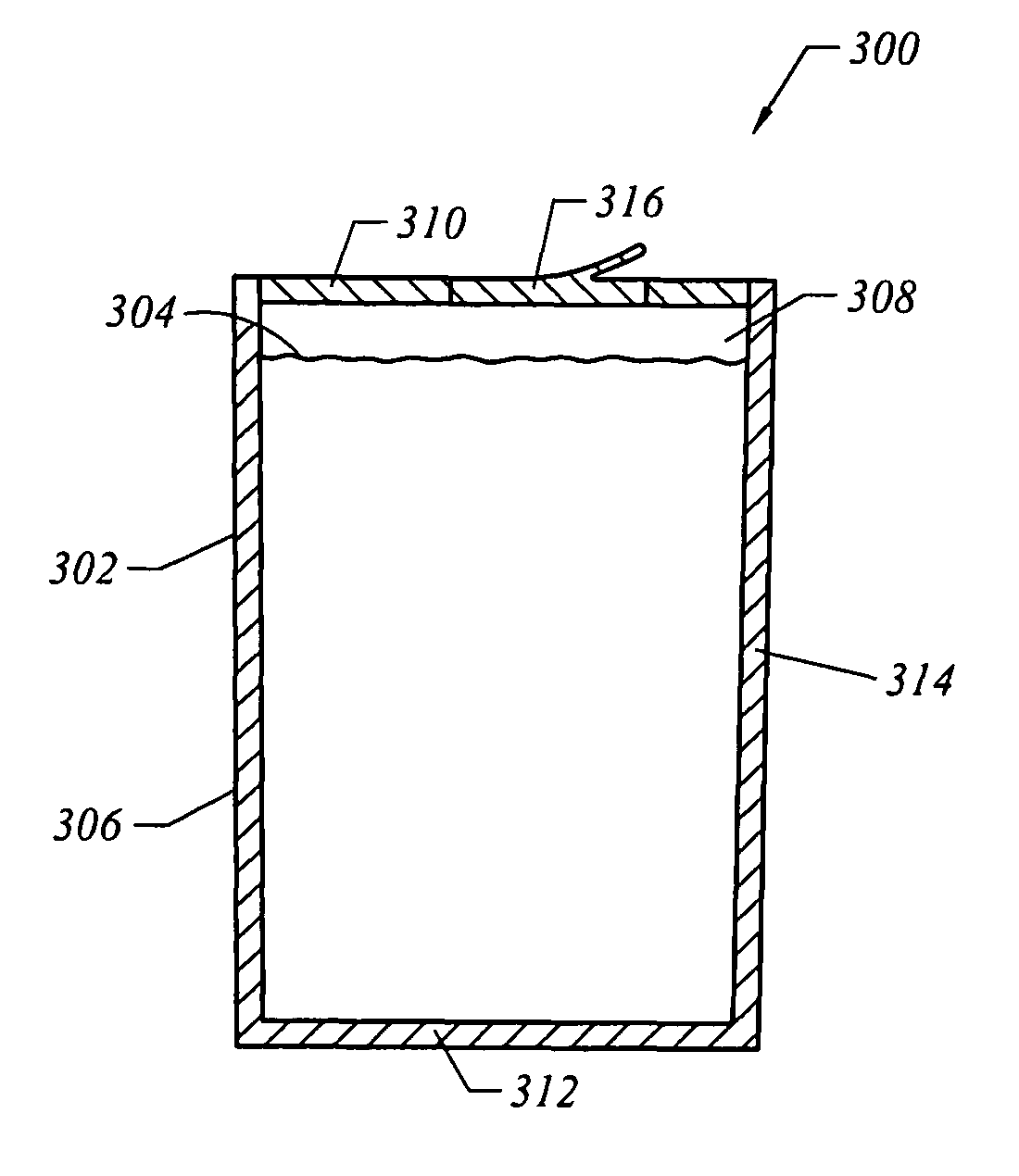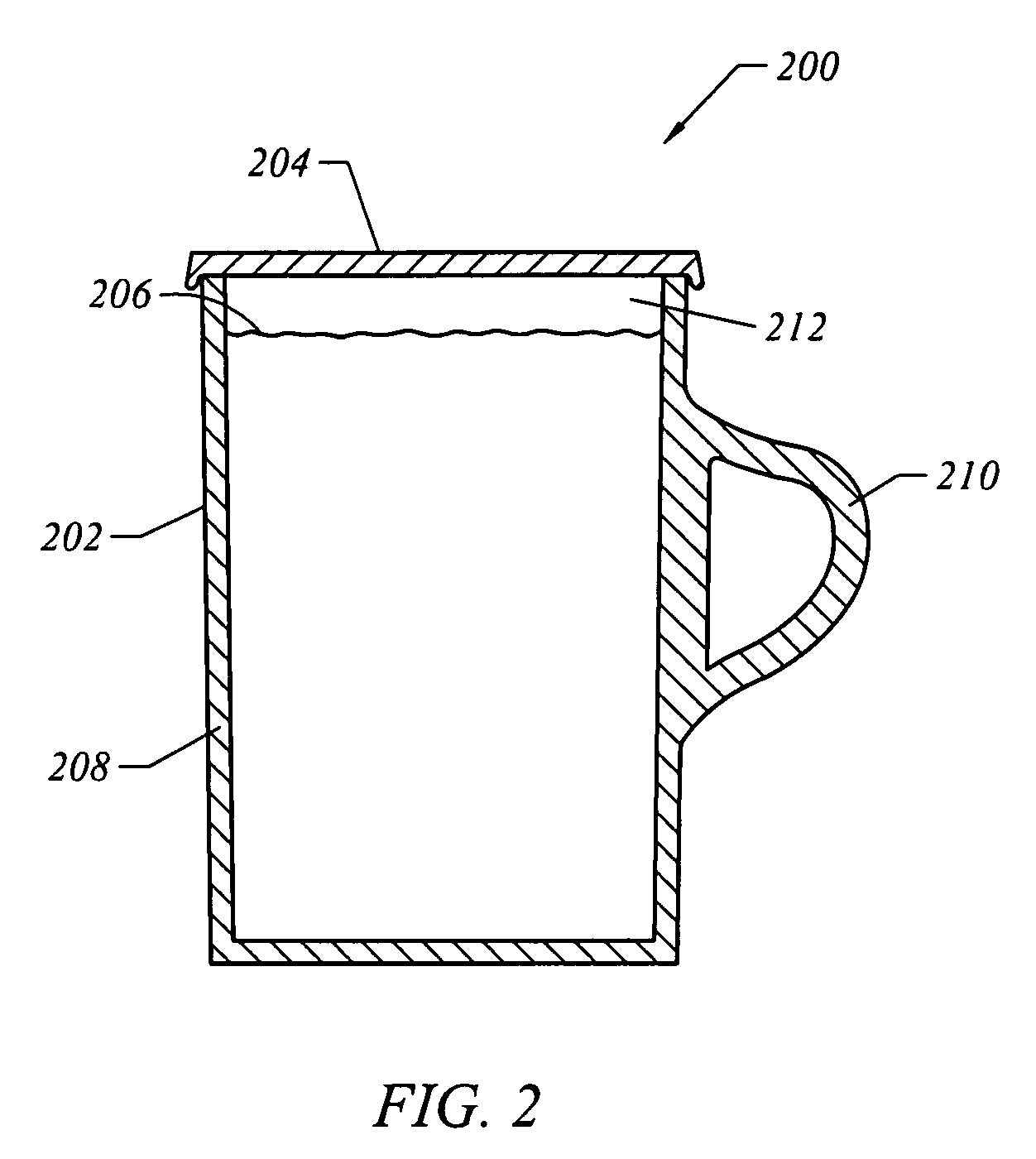Containers and packagings for regulating heat transfer
a technology applied in the field of container and packaging, can solve the problems of coffee having an undesirable tendency to cool down, soft drink that is contained in the beverage bottle, and unfavorable warming of soft drink
- Summary
- Abstract
- Description
- Claims
- Application Information
AI Technical Summary
Benefits of technology
Problems solved by technology
Method used
Image
Examples
example 1
[0082]Five different labels for glass bottles were provided. Two of these labels, namely label A and label B, were formed so as to include microcapsules containing a phase change material. In particular, label A was formed with a coating that included about 50% by dry weight of the microcapsules, while label B was formed with a coating that included about 30% by dry weight of the microcapsules. The remaining three labels, namely label C, label D, and label E, lacked the microcapsules and served as control labels. In particular, label C was a plain, 360° wrap label, label D was a plain, pressure-sensitive label, and label E was a standard, non-360° wrap label. These labels were coupled to respective glass bottles, and the glass bottles were then filled with substantially equal amounts of water.
[0083]Temperature measurements of contents of the glass bottles were made in accordance with a test protocol, which involved intermittently holding the glass bottles to simulate conditions duri...
example 2
[0084]Two different beverage cans were provided. One of the beverage cans, namely beverage can F, was formed with a coating that included microcapsules containing a phase change material. The remaining beverage can, namely beverage can G, lacked the microcapsules and served as a control beverage can. The beverage cans were filled with substantially equal amounts of a liquid, and temperature measurements were made in accordance with a test protocol similar to that described in connection with Example 1.
[0085]Referring to FIG. 8, results of the temperature measurements for the beverage cans are shown as a function of time. As can be appreciated by referring to FIG. 8, contents of beverage can F exhibited reduced warming as compared with contents of the control beverage can.
[0086]It should be appreciated that the embodiments of the invention described above are provided by way of example, and various other embodiments are contemplated. For example, while some embodiments of the inventi...
PUM
 Login to View More
Login to View More Abstract
Description
Claims
Application Information
 Login to View More
Login to View More - R&D
- Intellectual Property
- Life Sciences
- Materials
- Tech Scout
- Unparalleled Data Quality
- Higher Quality Content
- 60% Fewer Hallucinations
Browse by: Latest US Patents, China's latest patents, Technical Efficacy Thesaurus, Application Domain, Technology Topic, Popular Technical Reports.
© 2025 PatSnap. All rights reserved.Legal|Privacy policy|Modern Slavery Act Transparency Statement|Sitemap|About US| Contact US: help@patsnap.com



